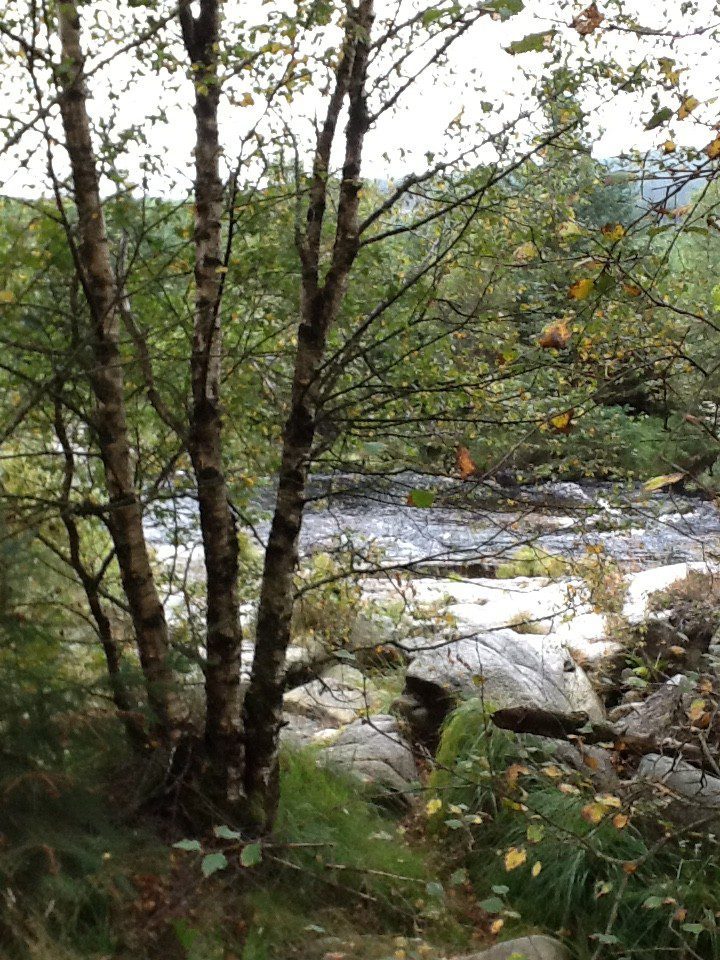I was recently, thanks to the Wigtown Book Festival’s last minute invitation, back in Galloway on an all too infrequent trip and managed to get some research in for my next ‘Discovering Crockett’s Galloway’ book (due out in spring 2016.)
The place I was most interested in on this trip was The Black Water of Dee. The very name is evocative. And the stories told about it are even more so. But where is it?
The River Dee, which starts, as common sense would dictate at Loch Dee deep in the Galloway hills. There appear on a map to be many tributaries from that source. The main one (at least as far as I’m concerned) flows east, through the very impressive Clatteringshaws – so impressive that we must remember it is a man-made affair – and then mostly alongside the Raiders Road route, past Loch Stroan, through Mossdale and finally coming out at Loch Ken where, as the River Dee, it continues to flow southwards before hitting the Solway Firth at Kirkcudbright. To me that seems like a mighty river. I know that at nearly 40 miles in length it’s not the Amazon or anything, but it’s surely a river with persistence. Nothing stops it.
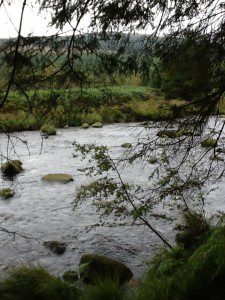 [picture Black Water ]
[picture Black Water ]
The ‘Black Water’ is the stretch of the river to the west of Loch Ken, deep in Crockett’s childhood heartland, and so it’s not surprising it held a special place in his heart. There’s a circular walk from Loch Stroan (under the viaduct) or you can walk along the old railway line to Mossdale.
Either way, you’re near the place Crockett pictures when he wrote ‘A Cry Across the Black Water’ which features in the collection ‘Bog Myrtle and Peat, first published in 1895. This is an eclectic collection of stories and one which I’d encourage any lover of Galloway to read. A contemporary reviewer said:
‘The admirers of ‘The Stickit Minister’ will look to ‘Bog Myrtle and Peat’ for more of Galloway. And they will get plenty of it, rich, reeking, and warm, like a Burnseian haggis. There is not perhaps so much pathos in the new collection of stories as in the old – but there is more of humour, and more, I think, of that reality, which needs none of the Galloway equivalent of rouge to make it attractive.
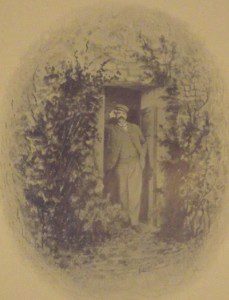 [picture Crockett]
[picture Crockett]
There is a lot of Crockett himself in this book. Not only does he dedicate it to his father in law but in his preface he opens up his heart in a way which seems Romantically familiar. He talks of the ‘Book Sealed’ – that which he writes in his mind but somehow never translates into actuality. Many writers will understand this feeling. Indeed in ‘Bog Myrtle and Peat’ we very much see Crockett as a descendent of the Romantic poets both his thought process and his style. There are strong elements of the gothic in several of the tales, especially ‘A Cry Across the Black Water’ set firmly on the River Dee while the more expansive, European story, ‘Saint Lucy of the Eyes’ reminds me of a prose version of Keats’ ‘La Belle Dame sans Merci.’
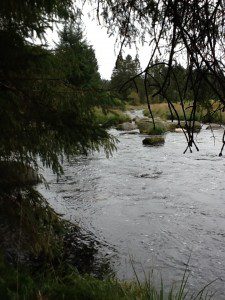 [picture Black water ]
[picture Black water ]
Even though he was still a Free Kirk minister when these stories were gathered and published, we clearly see his Nature is God stance coming through. For Crockett, God is love and love is seen in Nature. It’s a gross misrepresentation of him to suggest that he is small-minded or parochial in his religious outlook. Crockett’s relationship to religion is far more expansive than he’s been given credit for by those who don’t read further than the title of his works. But then loads of people don’t ever venture into Galloway, do they? Some dismiss it as ‘The Borders’ while others are unaware that if you turn west off theA74 you’ll find anything before the ferry to Ireland at Stranraer. Scotland’s best kept secret anyone?
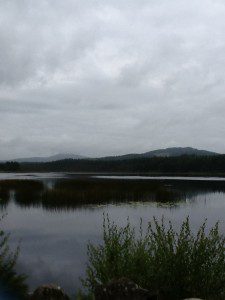 [picture Loch Stroan, River Dee]
[picture Loch Stroan, River Dee]
If Galloway is Scotland in miniature, then ‘Bog Myrtle and Peat’ is Crockett compressed. In it you’ll find most of the styles of his writing – it’s split into five ‘books’ – take the titles with a pinch of ironic salt: Adventures, Intimacies, Histories, Idylls and Tales of the Kirk. There follows an epilogue ‘In Praise of Galloway’ which features wonderful natural descriptions of a night in a Galloway Forest. For these and many more reasons, I’d recommend that if you can, before winter sets in, you take a late autumn dander to check out the Black Water of Dee. I believe the Raiders Road closes at the end of October, but The Black Water is still accessible by foot.
And if you go, why not take some Crockett to read with you? You can buy ‘Bog Myrtle and Peat’ as an ebook or paperback from the Galloway Raiders online store, or if you still need convincing, why not download the free PDF of ‘A Cry Across the Black Water’ from the Galloway Raiders Homepage – and take it along with you. And if you can’t make it to Galloway, you can still let Crockett transport you from your armchair –whatever the weather!
Cally Phillips
To get your free PDF download go to www.gallowayraiders.co.uk
Bog Myrtle and Peat (and the rest of the Galloway Collection,) are available from the online Galloway Raiders bookstore in paperback and digital editions. There are special discounts for members and membership is free.
https://www.gallowayraiders.co.uk/store/c1/Featured_Products.html

